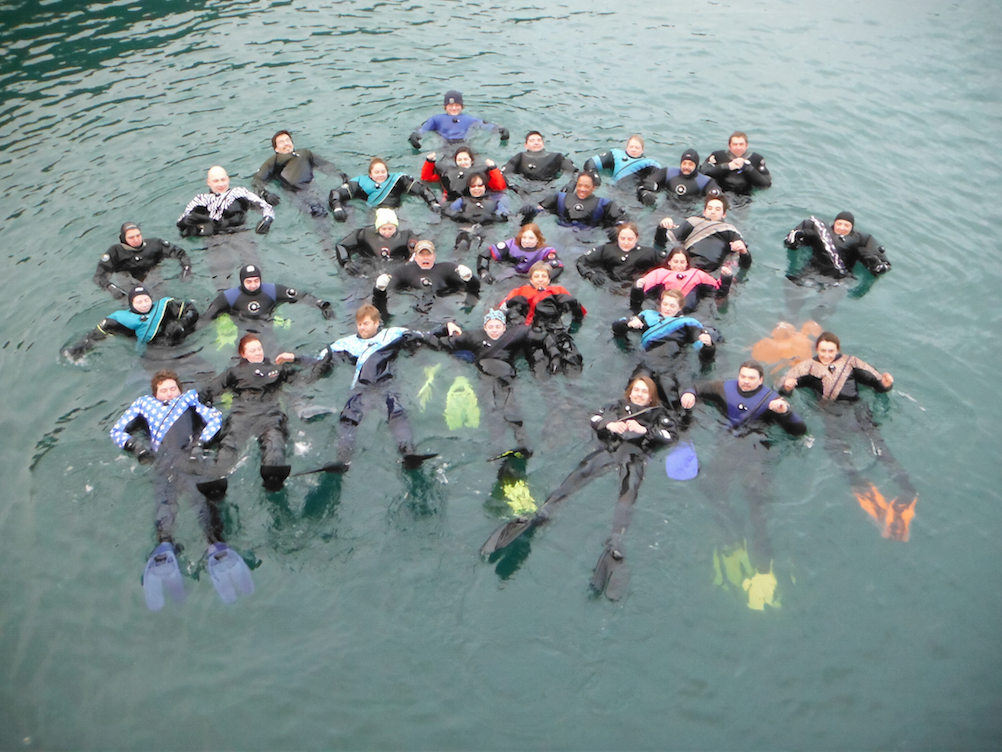
News
News
News
SSSC Research Biologist, Lauren Bell, featured in article on UAF Scientific Diving Program
https://web.sfos.uaf.edu/wordpress/news/?p=2337

Diving program gives students tools and experience for underwater research
An undergraduate student at the University of Alaska Fairbanks confirmed the first cases of sea star wasting disease in decades at Kasitsna Bay and Jackalof Bay, two tiny bays on the outskirts of Kachemak Bay near Homer.
Zachary Goeden was taking “Field Studies in Subtidal Ecology,” a research-focused scientific diving course through the UAF School of Fisheries and Ocean Sciences, when he made the discovery in spring 2016.
The University of Alaska system-wide scientific diving program was started in 1989. SFOS professor Brenda Konar incorporated student training into the program when she started teaching scientific diving courses in 2000. “Almost every scientific diver in Alaska has interacted with Brenda, has been through her class or has been influenced by her approach to underwater research techniques,” said Lauren Bell, a recent UAF graduate and student in the scientific diving program. “To have such a high-caliber training program is really important, especially given the cold water and remote field sites that characterize marine research in Alaska.”
Scientific Diving, the prerequisite to the field studies course, gives students the basic scuba and research skills needed to conduct dive-related fieldwork during a weeklong field component at the Kasitsna Bay Laboratory.
“We give the students lots of different tasks to expose them to sampling techniques, or team them with a project the field studies divers are doing,” Konar said. “By the end of the week, the students have worked on a variety of projects and understand a bit better the different kinds of science they can do with diving, even on such a short timescale.”
Trained scientific divers can enroll in the field studies course the following year, which focuses on completing a short research project in Kasitsna Bay.
In 2016, Goeden was one of four students enrolled in the field studies course. Goeden expected to see sea stars infected with wasting disease in Kasitsna Bay and Jackolof Bay because they had been seen in the Kachemak Bay area. The disease can cause the limbs of sea stars to fall off, making the sea stars look as if they are melting or decomposing. In addition to confirming the presence of wasting disease in these two bays, Goeden wanted to begin to compare infection rates for different species of sea stars.
He looked for the disease by conducting seventeen 45×2-meter scuba transects across both bays. Goeden and some volunteer divers from the scientific diving class swam from one end of each transect to the other, counting sea stars along the way. Goeden found that rates of wasting disease were higher in communities with higher densities of sea stars. More research is needed to understand how individual species in the region are likely to be affected.
Graduates of the diving program, like Lauren Bell, are now doing diving-related work across Alaska. Bell works as a research biologist at the Sitka Sound Science Center, where she is involved in a number of diving-related projects, including monitoring kelp and abalone populations and the carbonate chemistry of kelp forests in Sitka Sound. Bell said conducting her field studies research project was one of the most valuable aspects of the program for her. It taught her how to think about what it meant to coordinate underwater research and design an appropriate project for a given question. Bell thinks scientific diving is an important tool for any marine biologist, especially those living on the coast.
“It’s a hugely valuable skill for locally based science, and one that not many people are trained to do,” Bell said. “For any maritime community in Alaska, there’s a lot of opportunity to use diving to help people understand what’s going on in their backyard. Out-of-state collaborators are always pleasantly surprised that there’s someone in ‘remote’ Alaska with scientific diving qualifications.”
ADDITIONAL CONTACTS: Brenda Konar, bhkonar@alaska.edu, 907-474-5028; Lauren Bell, lbell@sitkascience.org, 907-747-8878 ext. 8.

